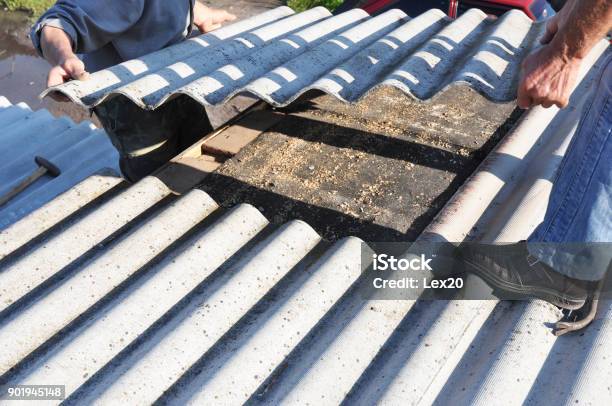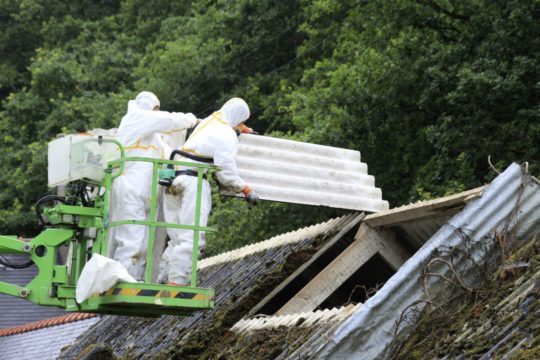Asbestos Roof Removal Insurance Requirements Removal Of Asbestos Roof In Area
Asbestos abatement guidelines are crucial for making certain safety and minimizing health risks associated with asbestos exposure - Importance Of Professional Asbestos Removal. Asbestos is a naturally occurring mineral that was broadly utilized in building materials and various merchandise due to its power and heat resistance. However, extended exposure to asbestos fibers can lead to significant health points, including lung cancer and mesothelioma. As such, coping with asbestos requires careful planning and adherence to established guidelines
Before any abatement work begins, it's essential to conduct a thorough assessment of the location. This involves figuring out all asbestos-containing materials (ACMs) present and understanding their situation. If they are broken or deteriorating, the risk of fiber launch into the air increases, making it essential to plan for removal or encapsulation.

Proper training for personnel involved in asbestos abatement is paramount. Workers should endure specialized training to deal with asbestos safely. This training ought to cover the utilization of personal protective equipment (PPE), safe dealing with techniques, and emergency procedures for dealing with potential exposure. Additionally, solely licensed professionals ought to perform abatement actions, as they possess the experience required to manage hazardous materials successfully.
Asbestos Safety Guidelines For Roof Work Risks Associated With Asbestos Roofs
Effective communication plays an important role in the compliance with asbestos abatement guidelines. Property house owners and contractors should make sure that all stakeholders are knowledgeable about the presence of asbestos and the proposed abatement plans. This consists of notifying staff, tenants, and any related authorities about the potential hazards and the measures that shall be undertaken to mitigate risks.
Once the assessment is full and a plan is in place, the following step involves choosing the suitable abatement method. Common methods embody removal, encapsulation, and enclosure. Removal entails the whole extraction of asbestos materials, while encapsulation seals the fibers in place to stop launch. Enclosure, however, involves developing obstacles to comprise the asbestos.
Proper containment procedures are important in the course of the abatement process. This contains utilizing plastic sheeting to seal off work areas and prevent contamination of the surrounding environment. Negative air pressure systems may also be utilized to make sure that any airborne fibers are contained inside the work area, additional defending different areas of the building.

During the abatement process, frequent air monitoring is essential. Aftercare Following Asbestos Roof Removal. This helps be sure that fiber ranges stay under permissible limits. If testing signifies a rise in fiber levels, quick action must be taken to address the contamination, which may contain halting work till the problem is resolved and further containment measures are put in place
Asbestos Removal Project Completion Protocols How To Get Your Roof Replaced For Under 1000
Once the abatement work is completed, proper disposal of the asbestos is necessary. Asbestos waste should be dealt with and transported in accordance with native regulations, usually requiring disposal at specialised landfills outfitted to manage hazardous materials. Clear labeling and safe packaging of the waste are important to stop unintentional exposure during dealing with and transport.
After the disposal, a follow-up inspection must be performed to verify that the abatement was profitable. This might contain further air monitoring and a visual inspection of the work area. Proper documentation of the complete process, together with assessments, monitoring results, and disposal data, is essential for compliance and future reference.
Asbestos Roof Removal Licenses And Accreditation Safe, Reliable And Experienced Removal Services
In addition to following these specific guidelines, common training and updates are crucial for all personnel involved in asbestos management. Changes in regulations or best practices should be communicated promptly to ensure ongoing compliance with safety requirements. Establishing a culture of safety that prioritizes health and environmental issues can significantly improve the effectiveness of any asbestos abatement program.
To sum up, the implementation of effective asbestos abatement guidelines isn't just a regulatory requirement but an ethical obligation to protect human health and the environment. The multifaceted method, together with assessment, training, containment, monitoring, and proper disposal, plays a significant function in minimizing the risks associated with asbestos exposure. Long-term vigilance and adherence to guidelines guarantee a safer environment for everyone.
In the tip, effective management of asbestos ensures that communities are better protected from its hazardous effects. This requires ongoing collaboration amongst contractors, property owners, regulatory our bodies, and the workforce involved. By prioritizing safety and following established guidelines, it's attainable to mitigate the risks posed by asbestos and create more healthy dwelling and dealing spaces for all.
Asbestos Risk Assessment For Roofing Commercial Roofing Contractor For Removal
- Always conduct a thorough inspection and risk assessment by an authorized professional before starting any asbestos abatement project.
- Develop a comprehensive management plan that outlines the procedures, duties, and safety measures to be followed through the abatement process.
- Use acceptable personal protective equipment (PPE) similar to respirators, disposable coveralls, and gloves to forestall exposure in the course of the handling of asbestos-containing materials.
- Ensure that the work space is properly contained and ventilated to attenuate the discharge of asbestos fibers into the surrounding environment.
- Implement decontamination procedures for employees and equipment, including devoted wash stations and methods for safely disposing of asbestos waste.
- Notify native authorities and residents about the abatement project, adhering to any required regulations related to public safety and environmental protection.
- Utilize accredited asbestos abatement techniques, corresponding to encapsulation or removal, depending on the condition and site of the materials.
- Employ effective monitoring and air high quality testing before, throughout, and after the abatement to make sure compliance with legal standards for airborne asbestos levels.
- Train all personnel involved in the abatement process on safe dealing with practices and emergency response procedures to make sure a secure work environment.
- Keep detailed records of the whole abatement process, including inspections, abatement methods used, waste disposal documentation, and air quality exams outcomes.undefinedWhat is asbestos abatement?
Asbestos abatement refers back to the process of decreasing or eliminating asbestos hazards in buildings. This can embrace removal, encapsulation, or enclosure of asbestos materials, carried out by licensed professionals to make sure safety and compliance with regulations.
Why is asbestos abatement necessary?
Asbestos Roof Removal Health Risks Cost Guide For Asbestos Removal
Asbestos abatement is important to guard human health. Asbestos exposure can result in severe diseases, including lung most cancers and mesothelioma. Proper abatement prevents asbestos fibers from changing into airborne and minimizes the risk of exposure.
What are the guidelines for asbestos abatement?
Asbestos abatement guidelines embrace following federal, state, and native regulations, conducting thorough inspections, organising correct safety protocols, utilizing licensed professionals, and documenting all procedures and findings for compliance and safety records.
Who should perform asbestos abatement?
Synergistic Effects Of Asbestos Exposure Best & Cheap Removal Services Available
Asbestos abatement must be carried out by skilled and certified professionals who specialize in hazardous materials. They have the mandatory tools, information, and experience to conduct safe and effective abatement procedures.
What precautions are taken during asbestos abatement?
Precautions during asbestos abatement include sealing off the work space, utilizing protective gear, using HEPA-filtered vacuums, and guaranteeing correct waste disposal. Adhering to those precautions minimizes the danger of contamination and protects workers and residents.
How can I find licensed asbestos abatement contractors?
Asbestos Roof Removal For Home Renovations Testing, Removal & Disposal Of Asbestos
To find licensed asbestos abatement contractors, you'll have the ability to check your state’s health department or environmental company, search online directories, or request suggestions from local building authorities. Verify their credentials earlier than hiring.
What is the cost of asbestos abatement?
Diy Asbestos Roof Removal Considerations Removal And Disposal Of Asbestos

The cost of asbestos abatement can range widely depending on factors such as the extent of asbestos present, location, and the complexity of the job. An initial inspection is commonly required to supply an accurate estimate.
Are there legal guidelines governing asbestos abatement?
Yes, there are quite a few laws and regulations governing asbestos abatement, together with the Clean Air Act and OSHA regulations. These laws are designed to protect employees and the public from hazardous exposure and outline strict procedures that have to be followed.
Asbestos Roof Inspection Services Sydney Cost To Remove Asbestos Garage
What should I do if I suspect asbestos in my home?
If you suspect asbestos in your house, avoid disturbing the material and search professional advice. It is advisable to rent a certified inspector to assess the scenario and recommend acceptable actions, such as testing or abatement.
How long does an asbestos abatement project take?
The period of an asbestos abatement project can vary primarily based on the scale and complexity of the work. Most small to medium projects may be completed in a quantity of days, whereas larger, more difficult jobs may take weeks. Planning and scheduling are essential for correct timelines.
resource check these guys out